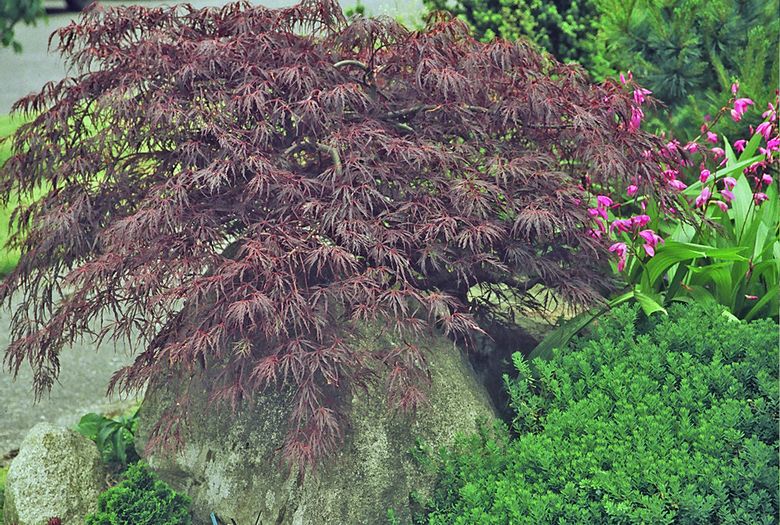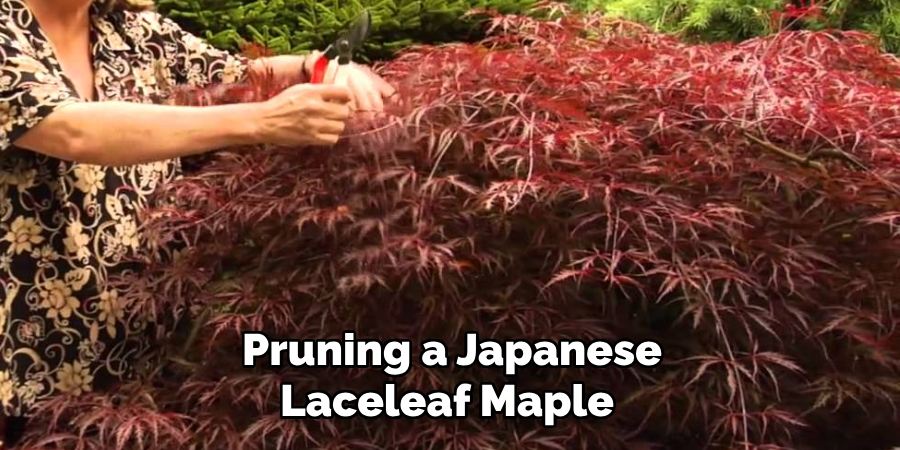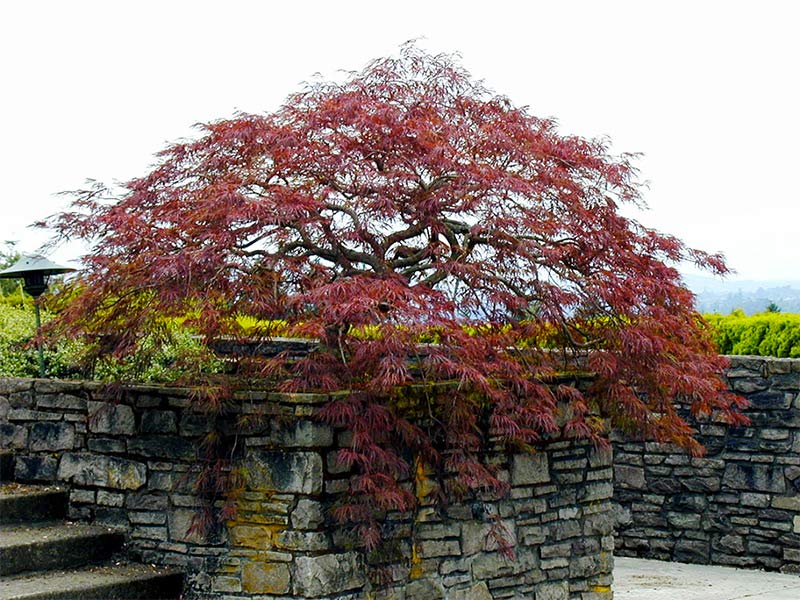Pruning a japanese laceleaf maple requires precision and careful attention to detail. This article will guide you on the proper techniques to prune your tree effectively.
Japanese laceleaf maple, also known as acer palmatum dissectum, is a stunning ornamental tree known for its delicate foliage and graceful branching. Regular pruning helps maintain its shape, remove diseased or damaged branches, and promote healthy growth. To prune a japanese laceleaf maple, start by removing any dead or broken branches.
Then, selectively thin out dense areas by cutting back branches to a bud or lateral branch. Avoid heavy pruning, as this can damage the tree. Pruning during the dormant season, typically late winter or early spring, is recommended. By following these steps, you can keep your japanese laceleaf maple looking its best year-round.

Credit: www.seattletimes.com
How to Prune a Japanese Laceleaf Maple: Step by Step Guide
Prepare For Pruning
Pruning a japanese laceleaf maple requires careful preparation. To ensure successful pruning, it is essential to have the necessary tools and equipment. Before starting, assess the overall health and structure of the tree. This helps determine the areas that need pruning and avoids unnecessary damage.
Timing is crucial for optimal results. Prune during late winter or early spring when the tree is dormant. This reduces the risk of excessive bleeding and promotes faster healing. Properly sharpened pruning shears, loppers, and a pruning saw are essential tools.
Additionally, use clean cloths and a disinfectant to prevent the spread of diseases from one cut to another. By following these guidelines, you can effectively prune your japanese laceleaf maple and ensure its continued health and beauty.
Pruning Techniques For Japanese Laceleaf Maples
Japanese laceleaf maples can be pruned to enhance their natural form by selectively removing dead or damaged branches. Controlling the size and shape of the tree is also important to maintain its desired appearance. Additionally, it is crucial to maintain overall balance and symmetry when pruning these maples.
By following these techniques, you can ensure that your japanese laceleaf maple remains healthy and visually appealing. Proper pruning can also help improve air circulation and sunlight penetration, which are essential for the tree’s growth. Regularly inspect your tree for any signs of disease or insect infestation, and prune accordingly.
Remember to use sharp, clean tools and make clean cuts at the branch collar. Pruning a japanese laceleaf maple requires patience and attention to detail, but the results are well worth the effort.
Tips For Pruning Japanese Laceleaf Maples
Japanese laceleaf maples are beautiful and delicate trees that require proper pruning for their overall health. When pruning these trees, it is important to create clean cuts to minimize damage and the risk of diseases. Pruning also promotes better air circulation and light penetration, which can enhance the tree’s growth and appearance.
It is essential to consider the season when pruning, as different times of the year can affect the tree’s response. Additionally, it is important to make adjustments based on the age of the tree, as younger and older trees may require different pruning techniques.
By following these tips, you can ensure the proper pruning of your japanese laceleaf maple, maintaining its health and beauty for years to come.
Potential Risks Of Improper Pruning
Improper pruning of a japanese laceleaf maple can pose various risks to the tree’s health and vigor. The first risk is increased susceptibility to pests and diseases. When the tree is pruned incorrectly, it becomes more vulnerable to infestations and infections, which can negatively impact its overall well-being.
Additionally, distorted growth is another consequence of improper pruning. The tree may develop an asymmetrical shape or exhibit abnormal branching patterns, resulting in a loss of its aesthetic appeal. To maintain the health and beauty of a japanese laceleaf maple, it is crucial to understand the potential risks of improper pruning and to follow proper pruning techniques.
This ensures the tree’s longevity and enhances its visual charm.
Common Pruning Mistakes To Avoid

Pruning a japanese laceleaf maple requires avoiding common mistakes that can harm the tree. Over-pruning or removing too many branches can damage the tree’s overall structure. Improper timing of pruning can affect regrowth potential. It is important to observe the tree’s natural growth patterns to ensure proper trimming.
Neglecting to do so can disrupt the tree’s shape and form. Maintaining a balanced structure is key to promoting healthy growth and aesthetic appeal. By following these guidelines, you can effectively prune a japanese laceleaf maple without causing harm and maintain its beauty for years to come.
Proper Care And Maintenance After Pruning
Pruning a japanese laceleaf maple requires proper care and maintenance. After pruning, it’s important to address watering and fertilization requirements. Adequate watering and appropriate fertilization will ensure the tree’s health and growth. In addition, mulching around the base of the tree helps conserve moisture and protects the sensitive roots.
Regular inspection for signs of pests or diseases is vital to catch any issues early on. This allows for prompt treatment and prevention of potential damage. By following these guidelines, you can ensure the long-term health and beauty of your japanese laceleaf maple tree.
Additional Tips For Tree Health And Longevity
Proper soil conditions and ph levels are crucial for the health and longevity of japanese laceleaf maple trees. Ensuring that the soil has the right composition and ph balance will provide the necessary nutrients and support for the tree’s growth.
Protection from extreme temperatures and harsh elements is also important, as these can cause damage and stress to the tree. Regular pruning should be incorporated into an overall maintenance plan to promote the tree’s health and shape. Pruning helps remove dead or diseased branches, improves air circulation, and maintains a desired size and form.
By following these tips, you can ensure the well-being of your japanese laceleaf maple tree and enjoy its beauty for years to come.
Maintaining The Pruned Appearance Of Japanese Laceleaf Maples
Japanese laceleaf maples are beautiful trees that require careful pruning to maintain their appearance. It’s important to resist the urge to over-prune or excessively shape the tree. Instead, regular inspections and light touch-ups as needed are recommended. By appreciating the natural beauty of the tree’s form and foliage, you can enhance its overall appearance.
Remember to avoid common mistakes such as over-pruning or shaping the tree too much. Instead, focus on lightly maintaining its appearance through regular inspections and minimal adjustments. This will help preserve the tree’s natural beauty and promote healthy growth. With these guidelines in mind, you can successfully prune your japanese laceleaf maple and enjoy its exquisite beauty for years to come.
Frequently Asked Questions Of How To Prune A Japanese Laceleaf Maple
How Do You Prune A Japanese Laceleaf Maple?
To prune a japanese laceleaf maple, start by removing any dead or damaged branches. Then, thin out dense areas to allow for better air circulation. When pruning, make cuts just outside the branch collar, and avoid pruning during periods of active growth.
Regular pruning will help maintain the tree’s graceful shape.
When Is The Best Time To Prune A Japanese Laceleaf Maple?
The best time to prune a japanese laceleaf maple is during late winter or early spring, before new growth begins. This allows the tree to heal its wounds before the growing season starts. Avoid pruning during the hotter months, as this can stress the tree and make it more susceptible to disease or pests.
How Much Should You Prune A Japanese Laceleaf Maple?

When pruning a japanese laceleaf maple, it’s important not to overdo it. Aim to remove no more than 25% of the tree’s total foliage in one season. Over-pruning can weaken the tree and affect its overall health. It’s better to prune lightly and regularly to maintain its natural shape and form.
Can You Prune A Japanese Laceleaf Maple In The Summer?
While it is generally not recommended to prune a japanese laceleaf maple in the summer, light pruning for corrective purposes can be done. Remove any unwanted or damaged branches, but avoid heavy pruning during this time. Pruning during the summer can cause stress to the tree and make it more susceptible to diseases.
Conclusion
Pruning a japanese laceleaf maple is a task that requires careful consideration and knowledge of the tree’s unique characteristics. By following the proper techniques and timing, you can maintain the health and shape of the tree while enhancing its beauty.
Always begin by assessing the tree’s specific needs, removing any dead or diseased branches first. Next, selectively prune to thin out dense areas and promote proper airflow. Remember to make clean cuts and avoid leaving stubs, as this can lead to disease or infestation.
Take your time and be patient, as the process of shaping a japanese laceleaf maple is an ongoing one. Regularly monitor the tree’s growth and continue to shape it as needed. With diligent care and proper pruning, your japanese laceleaf maple will thrive and become a stunning focal point in your garden.

